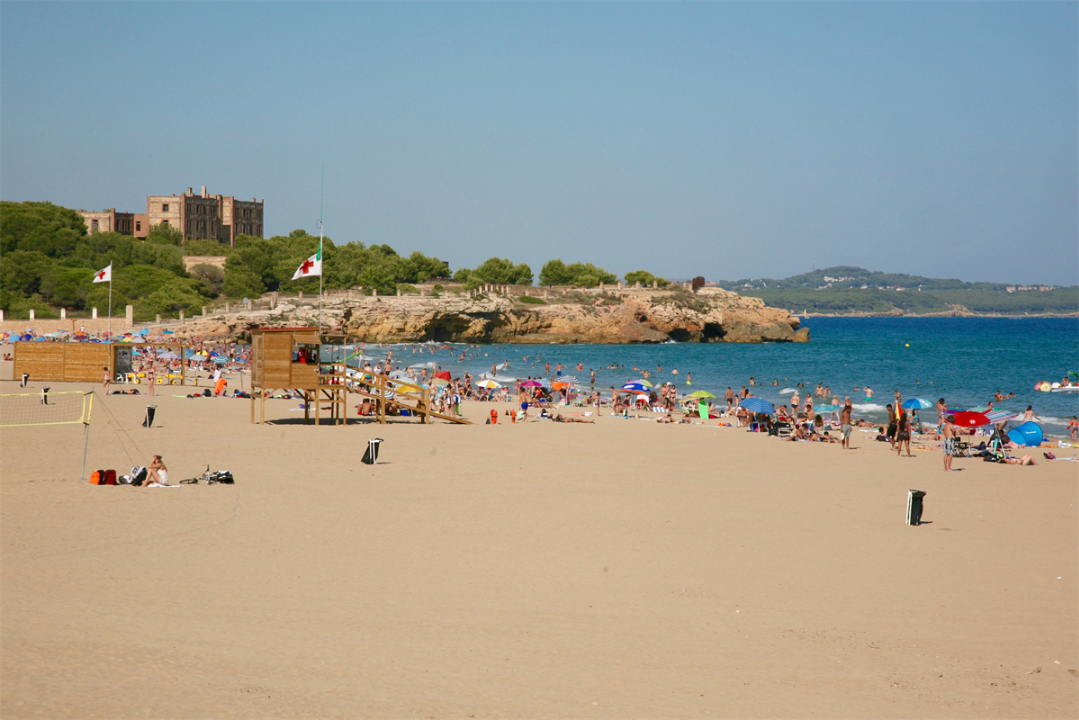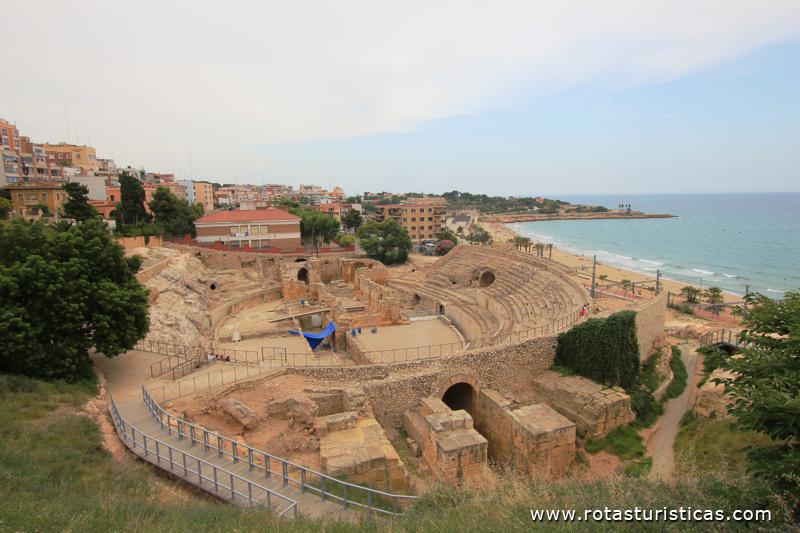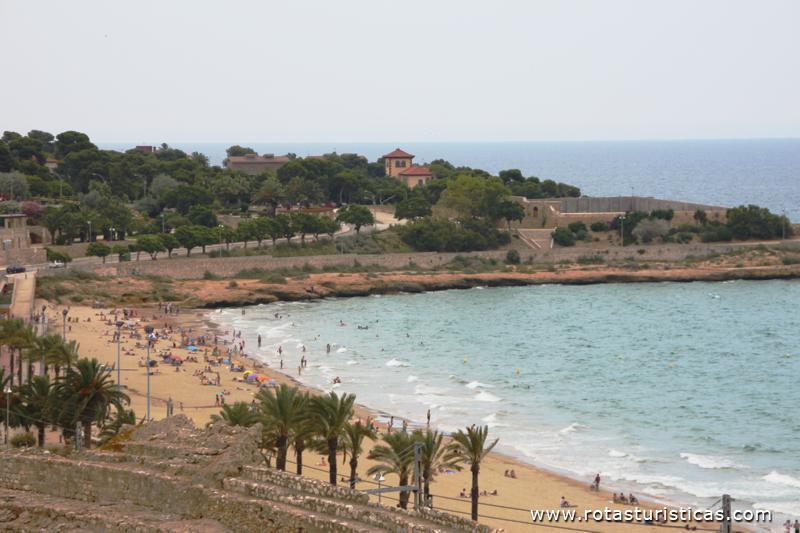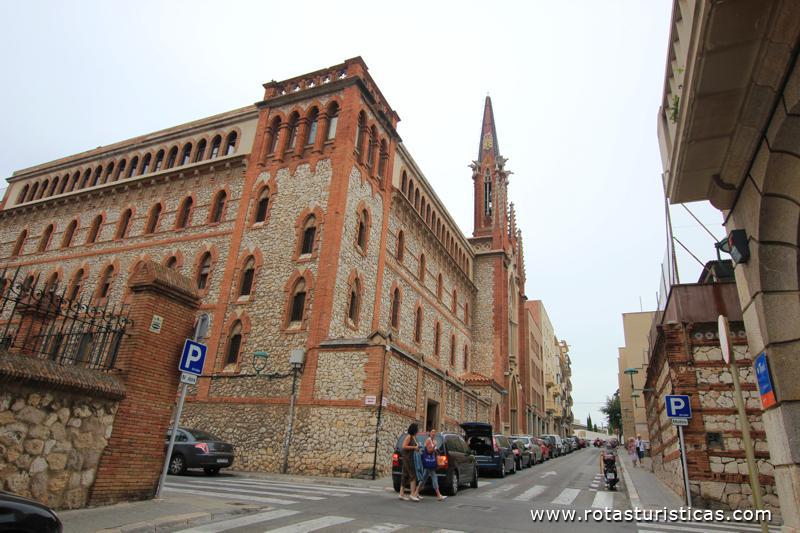Pictures of: Tarragona, Catalonia
Location map
Airports
Hotels and other Accommodation
Golf Courses
What to visit
Where to Eat
Where to have fun
Consulates & Embassies
World Nomads
The Travel Insurance with the largest coverage

The Travel Insurance with the largest coverage

Tarragona
Tarragona is a city located in the south of Catalonia to the northeast of Spain, bathed by the Mediterranean Sea, and the capital of the province of the same name and the region Tarragonês. Geographically, it is bordered to the north by the province of Barcelona and the province of Lleida.
Tarragona, capital of Hispania Citerior during the Roman empire, preserves many constructions of that period.
The walls surrounding the historic center were built in the 3rd century BC, although they were altered in the medieval period.
Beside the sea are the terraces of the Roman amphitheater, which in its time had capacity for more than 12,000 people.
Tarragona, capital of Hispania Citerior during the Roman empire, preserves many constructions of that period.
The walls surrounding the historic center were built in the 3rd century BC, although they were altered in the medieval period.
Beside the sea are the terraces of the Roman amphitheater, which in its time had capacity for more than 12,000 people.
Tourism
The coast of Tarragona is identified with the Costa Dourada tourist brand.
The eternally sunny port city of Tarragona is a fascinating mix of Mediterranean beach life, Roman history and medieval alleys. Easily the most important Roman site in Catalonia, being the main attraction of Tarragona is its Roman amphitheater facing the sea. The medieval heart of the city is one of the best designed in Spain, its labyrinth of narrow streets surrounded by steep walls and crowned with a splendid cathedral and its buildings seemingly filled with golden light. Add to the varied abundance of tempting food options and a variety of bars panting into the wee hours and you will have the most exciting urban center in southern Catalonia.
The Cistercian monastery of El Poblet also has the distinction of World Heritage, and can be visited, having the Monastery Cistercian Route, which also includes the monasteries of Santes Creus and Valbona de les Monges.
The province has several nature reserves, which offer a perfect setting for outdoor sports.
Highlights of the province gastronomic attractions are particularly a series of activities related to wine, especially along the Cava Penedés Wine Route.
The eternally sunny port city of Tarragona is a fascinating mix of Mediterranean beach life, Roman history and medieval alleys. Easily the most important Roman site in Catalonia, being the main attraction of Tarragona is its Roman amphitheater facing the sea. The medieval heart of the city is one of the best designed in Spain, its labyrinth of narrow streets surrounded by steep walls and crowned with a splendid cathedral and its buildings seemingly filled with golden light. Add to the varied abundance of tempting food options and a variety of bars panting into the wee hours and you will have the most exciting urban center in southern Catalonia.
The Cistercian monastery of El Poblet also has the distinction of World Heritage, and can be visited, having the Monastery Cistercian Route, which also includes the monasteries of Santes Creus and Valbona de les Monges.
The province has several nature reserves, which offer a perfect setting for outdoor sports.
Highlights of the province gastronomic attractions are particularly a series of activities related to wine, especially along the Cava Penedés Wine Route.
Gastronomy
Tarragona offers exquisite cuisine that combines products from the land and the sea.
The most traditional dish is the Cassola romesco, a romesco sauce of cooked fish, the base to accompany all fish and seafood.
For those who decide to visit Tarragona between the months of January and April, it is the perfect time of year to eat regional chives, not to forget also to enjoy a nice "calçotada"
Among all specialties, it is recommended to visitors traditional dishes such as:
- beans of Catalan style;
- Grilled chives with Romescu sauce;
- grilled eggplant, tomatoes and red peppers;
- pork sausage with white beans;
- dry salted cod;
- chicken and seafood with white wine sauce;
- bread with tomatoes with homemade sausages;
- Typical soup with minced meat balls;
- fish stew;
- Brule cream;
- ricotta with honey and pine nuts;
The most traditional dish is the Cassola romesco, a romesco sauce of cooked fish, the base to accompany all fish and seafood.
For those who decide to visit Tarragona between the months of January and April, it is the perfect time of year to eat regional chives, not to forget also to enjoy a nice "calçotada"
Among all specialties, it is recommended to visitors traditional dishes such as:
- beans of Catalan style;
- Grilled chives with Romescu sauce;
- grilled eggplant, tomatoes and red peppers;
- pork sausage with white beans;
- dry salted cod;
- chicken and seafood with white wine sauce;
- bread with tomatoes with homemade sausages;
- Typical soup with minced meat balls;
- fish stew;
- Brule cream;
- ricotta with honey and pine nuts;
Weather
Tarragona has a typical Mediterranean climate.
The average annual temperature is over 16 ° C and precipitation barely reaches 500 mm. Winters are mild and summers warm. The rain is erratic, although a pattern through which the driest season is usually in the summer. Spring and fall tend to have the highest rainfall, especially in the fall.
The possibility of rainfall is distributed throughout the year and often reach high or very high intensity, although rainy season are generally short. The tempestuous nature of rainfall is generally higher in summer, followed by autumn, spring and winter, while the type of rainfall is more common in reverse order exposed. Snow is not uncommon but usually falls with intensity or duration sufficient to cover the ground, which makes it a subjectively perceived phenomenon much rarer than it really is.
Registrations of precipitation, available since the end of the eighteenth century, sometimes infrequent and others, indicate extreme annual values between about 300 and 700 mm.
The average number of days per year with the precipitation recorded is about 51.
The average annual temperature is over 16 ° C and precipitation barely reaches 500 mm. Winters are mild and summers warm. The rain is erratic, although a pattern through which the driest season is usually in the summer. Spring and fall tend to have the highest rainfall, especially in the fall.
The possibility of rainfall is distributed throughout the year and often reach high or very high intensity, although rainy season are generally short. The tempestuous nature of rainfall is generally higher in summer, followed by autumn, spring and winter, while the type of rainfall is more common in reverse order exposed. Snow is not uncommon but usually falls with intensity or duration sufficient to cover the ground, which makes it a subjectively perceived phenomenon much rarer than it really is.
Registrations of precipitation, available since the end of the eighteenth century, sometimes infrequent and others, indicate extreme annual values between about 300 and 700 mm.
The average number of days per year with the precipitation recorded is about 51.
Other tourist destinations in:
Spain
Spain
Other world tourist destinations
Why to book with FIND HOTEL ONLINE
The best prices
Our partnerships with the world´s largest operators offer research on the best market prices.
More options
At Rotas Turisticos you can book the hotel, buy the air ticket, book the transfer from the airport to the hotel and vice versa, book the local excursions, rent the car, take travel insurance and consult the places to visit and where to go.
Holiday Tips & Destinations
Hundreds of holiday destinations with all the options that allow you to easily choose the destination that best suits your dream vacation.
FIND HOTEL ONLINE
Links










